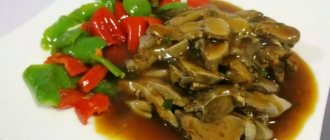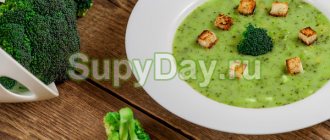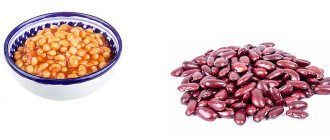Broccoli is considered a healthy fortified vegetable. It contains a lot of essential micro- and macroelements, and the low calorie content of broccoli makes it a desirable product as part of therapeutic nutrition systems and various diets for weight loss. The homeland of broccoli is considered to be the Mediterranean countries, as well as Asia Minor, where this crop is consumed in any form almost every day. In our country, broccoli is also becoming increasingly popular every year, so it can be bought in any supermarket.
This subspecies of cauliflower consists of a large number of inflorescences with a thick, dense stem. Both the inflorescences themselves and the stem are eaten, boiled, stewed, fried, steamed or grilled. The caloric content of broccoli is quite low and usually does not vary much depending on the cooking method, but the calorie content of steamed broccoli will be lower than the calorie content of roasted broccoli. Therefore, in order for the dish to have a full, rich taste, sour cream, various sauces and seasonings are added to it.
However, in order to accurately determine how many calories are in broccoli, you need to know the calorie content of the vegetable itself, as well as all other components in the dish. It is best to boil or steam this cabbage. In addition to the lowest calorie content, boiled broccoli will retain the largest amount of all nutrients and vitamins, and can also be used as part of diets.
In this article we will talk about how many calories are in broccoli depending on the type of cooking, and also learn about its beneficial properties and nutritional value.
Calorie content of broccoli depending on cooking method
Broccoli is prescribed for weight loss and is included in the menu after illnesses and surgical interventions, because this product is considered dietary.
Depending on the cooking method, the energy value of cabbage may change:
- boiled without salt – 27.5 kcal;
- boiled with salt – 29 kcal;
- steamed – 27 kcal;
- stewed – 38 kcal;
- fried – 48 kcal;
- baked – 30 kcal.
The increase in calories occurs due to the use of additional ingredients. The most contraindicated method is frying, because during cooking, broccoli absorbs oil and begins to negatively affect the body.
For 100 gr. Raw broccoli has:
| The nutritional value | Quantity |
| Squirrels | 2.8 gr. |
| Fats | 0.4 gr. |
| Carbohydrates | 7 gr. |
For a healthy spirit!
Healthy eating is the surest way to a good figure and a pleasant complexion. Moreover, you won’t have to sacrifice taste characteristics. Just fill your diet with low-calorie and filling foods. For example, boiled broccoli will do the job. Its calorie content reaches only 33 kcal per 100 grams. For comparison, it must be said that a chocolate bar without filler “weighs” 16 times more. There is an opinion that heat treatment significantly reduces the usefulness of vegetables, but this theory is not true for all groups. In particular, you need to take into account the condition of the cabbage before processing. So, dried cabbage after boiling is slightly higher in calorie content - 35 kcal, and frozen cabbage - lower - only 28 kcal. In principle, the indicators do not change much, and the most serious difference is the amount of vitamin C. There is much more of it in dried cabbage.
Benefits of broccoli
Broccoli is rich in vitamin and mineral composition:
- Vitamins A, C, K, U, E, group B;
- Potassium;
- Phosphorus;
- Calcium;
- Magnesium.
Due to the presence of such macro- and microelements in the composition, this vegetable crop has a positive effect on the human body:
- Reduces the likelihood of heart disease (heart attack, stroke) by removing cholesterol;
- Normalizes the acidity level of gastric juice;
- Stimulates processes in the gastrointestinal tract, eliminates constipation, cleanses the intestines;
- Normalizes blood sugar levels;
- Restores and strengthens nerves, by reducing the concentration of vitamin B1, memory improves, excessive irritability decreases, and a person’s psycho-emotional background is maintained;
- Normalizes the functioning of the gallbladder, improves the outflow of bile;
- Improves visual acuity, prevents cataracts;
- Supports and strengthens the immune system;
- Accelerates wound healing;
- Helps normalize water balance;
- Helps in eliminating allergies;
- Improves the condition of hair, nails, skin.
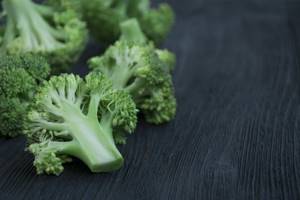
Calorie content of steamed green beans. Calorie content of green beans
For green beans, the calorie content is low - about 24 kcal per 100 g of product. The following beneficial ingredients are concentrated in the legume variety:
- alimentary fiber;
- ash;
- starch;
- disaccharides;
- vegetable fiber;
- organic acids;
- monosaccharides;
- carotene;
- tocopherol;
- vitamin C;
- fatty acid;
- pyridoxine;
- niacin;
- potassium;
- iron;
- phosphorus;
- calcium;
- zinc;
- magnesium;
- sodium, etc.
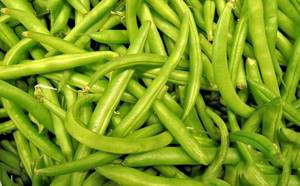
Experts recommend harvesting green beans at the beginning of ripening. The product can be used raw or boiled, peeled or in a soft shell. Products are often offered chilled; when frozen, most of the vitamins and minerals are preserved.
The green variety of beans has the following benefits for the body:
- reducing the effect of free radicals;
- improving the condition of hair, nails, teeth;
- normalization of the digestive system;
- weakening of symptoms of rheumatism;
- prevention of skin diseases;
- acceleration of metabolic processes;
- decreased blood sugar levels;
- antioxidant effect on the body;
- normalization of emotional state;
- regulation of blood clotting;
- increasing skin elasticity;
- improved calcium absorption;
- prevention of vitamin deficiency;
- antimicrobial effect;
- reduction of intoxication from food poisoning;
- removing toxins and excess fluid from the body;
- stabilization of metabolic processes, etc.
The low calorie content of green beans has made the product popular in complex diets for weight loss and improving the health of the body. The presence of zinc in green beans enhances metabolic processes and promotes fat burning. The product can be added as a side dish to the menu for weight loss or maintaining optimal body weight. It is optimal to include plant culture as a side dish 2-3 times every 7-8 days. The vegetable is a must for the zone diet, nutrition systems enriched with fiber products.

The low glycemic index (about 15 units) determined the use of the variety in the diet of people with diabetes. The presence of easily digestible vegetable proteins in the product allows the use of beans as a substitute for meat in vegetarian menus. However, it is necessary to consider how much of the product you can consume per day, because... Excess beans lead to a feeling of heaviness in the stomach and the appearance of excess weight.
For cooking, it is important to choose elastic pods without deformation. It is not recommended to buy dried pods. Fresh products can be stored for no more than 7-8 days in the refrigerator. When purchasing a frozen vegetable, it is recommended to choose a packaged product; the pods are packaged clean, without ice, and are suitable for quick preparation of dishes. After quick freezing, the products can be stored in the freezer for up to six months. After cooling, the beans retain vitamins and mineral complexes.
The bean variety requires little heat treatment (boiling, stewing); fresh products can be rinsed with hot water. When steaming, you need to keep the pods for 2-3 minutes. In dishes, the product is combined with spicy herbs, chili peppers, eggs, and garlic.
Adults with chronic diseases are recommended to add green beans to their diet. The presence of fiber and minerals triggers the body's recovery processes. Nutritionists recommend including pods in the diet of people recovering from operations and illnesses.
During pregnancy, the bean variety is recommended for patients to regularly add to their diet to improve hematopoiesis, stabilize the circulatory system, and prevent complications.
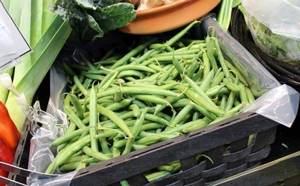
Harm of broccoli to the body
It is difficult to doubt the benefits of broccoli, but this vegetable can have a negative effect on the body. In cases where a person has been diagnosed with chronic gastrointestinal diseases, and has also discovered allergic reactions to foods containing vitamin C, it is better not to eat broccoli. You should consult your doctor about taking vegetables.
The main negative effects of broccoli manifest themselves in the form of:
- Rash (hives), this allergy is associated with a high concentration of vitamin A;
- Central nervous system disorders, such as poor sleep, frequent awakenings at night, this disorder occurs due to excess vitamin B;
- Reduced blood clotting (high potassium content leads to the renewal of blood cells, as a result of which the normal course of replacement processes is disrupted;
- Bone fragility (due to the high concentration of calcium, the body begins to flush it out);
- Failure of the functioning of the digestive system (after the intake of coarse fiber in a large volume, the intestinal microflora is disrupted).
In addition, do not forget that including only broccoli in the diet is prohibited. Often, representatives of the fair sex, in a thirst to lose weight, prepare dishes only from the specified plant crop in order to saturate the body with useful substances. However, in excess, this product can be harmful to health, so it must be consumed in limited quantities at certain intervals.

Features of cabbage
Girls often think through their diet in advance, and note the fact that per 100 grams of cabbage there are 3 grams of protein, that is, a 300 gram portion will give the body 10 grams of natural pure proteins. This amount does not change even if the broccoli is boiled. The calorie content of 100 grams is already quite low, and then there are the benefits of proteins. By the way, proteins provide satiety, and therefore the feeling of fullness after a meal will be long, but pleasant, without heaviness.
It should also be noted that it is not at all necessary to eat cabbage without spices. The calorie content of broccoli boiled with salt is 5-6 kcal more, and the taste becomes much more pleasant for a modern person. For piquancy, you can mix cabbage with grated garlic, pepper and cumin. For better absorption of beta-carotene in the composition, it is advisable to add vegetable oil to the cabbage. In the culinary world of different countries, broccoli is used to prepare light soups and vegetable salads. The delicate taste of cabbage harmonizes perfectly with fish, and it is no coincidence that salmon with broccoli with cheese sauce has become a classic of world cuisine. This is a tasty and healthy dish for real gourmets and lovers of healthy eating.
It also has the right to be present in the diet of a person losing weight, since it contains only 46 kcal per 100 grams. It goes well with tomatoes and cucumbers, and therefore can be a good side dish. The taste is in harmony with cheese and lemon zest. This dish is worthy of the best restaurant!
The vegetable is rich in vitamins C, K, PP, provitamin A, calcium, potassium, sodium, phosphorus, and iron.
The calorie content of boiled broccoli is almost the same as that of a fresh product. 100 g of boiled vegetable contains 27 kcal, 3 g of protein, 0.4 g of fat and 4 g of carbohydrates.
According to nutrition specialists, 200 g of the product eaten daily has a beneficial effect on human health, including promoting rapid fat burning and cleansing the intestines of toxins.
Broccoli Recipes
- Cream of broccoli soup
Sauteed onions and carrots are added to the chicken broth, and 400 grams are also placed. broccoli and diced potatoes, leave on medium heat for 15 minutes. After the soup has boiled, spices, salt, pepper, and herbs are added to it. Then all the contents along with the chicken are sent to a blender and ground to a consistency.
- Broccoli salad
- Place 200 g in boiling water. broccoli and boil for 2 minutes, then remove and place in cold water;
- Cut into cubes Cherry tomatoes 200 g, salted hard cheese 150 g, cooled cabbage;
- Prepare the sauce: to 0.5 tbsp. tablespoons of olive oil, add 0.5 teaspoons of mustard, honey, vinegar in the same volume, salt, pepper to taste. The resulting liquid is whipped;
- All ingredients are mixed, sauce and roasted pine nuts are added.
Comments to the article 0
How to cook?
How should you cook broccoli? Or is it better to simmer immediately? Or fry? Here's what nutritionists and chefs say about this. It is better to boil broccoli in salted water for 2-3 minutes, no more. This is one of those rare vegetables that is better to be slightly undercooked than overcooked. Remember that in boiled broccoli, almost all the beneficial substances die under the influence of high temperature.
Many people are interested in the question: how many calories are in boiled broccoli? It turns out that when boiled, this cabbage has the least amount of calories - only 35 kcal per 100 grams of product. That is why many women prefer the boiled version. In addition, broccoli can be stewed, fried in batter, and used as an ingredient in casseroles and soups. By the way, the latter are especially tasty made from pureed broccoli - so-called cream soups.
conclusions
Dietary cuisine is much more varied and appetizing than it might seem from the outside. But no matter how tasty it is, the main rule cannot be ignored - you need to observe moderation. Broccoli dishes have a low calorie content, but if you eat as much of them as you can, it will affect your metabolism and weight; it will not go away.
How to spend more time on yourself and your family, rather than spending hours cooking? How to make a dish beautiful and appetizing? How to get by with a minimum number of kitchen appliances? The 3in1 miracle knife is a convenient and functional kitchen assistant. Try it with a discount.
Basic recommendations
The idea of broccoli as a boring vegetable is a common myth. With this ingredient you can prepare countless healthy healthy dishes . Each recipe is interesting in its own way.
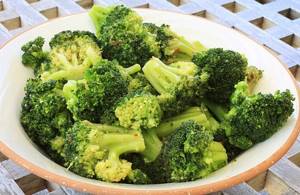
To make your dishes even tastier and more original, you need to know certain rules and secrets:
- To use the stems and stalks in cooking, they must first be cleaned. In fact, they are very tender after cooking. They will have to be steamed a little longer than the inflorescences.
- You can safely add lemon to any dish with broccoli in the form of juice or immediately in slices (for connoisseurs).
- It is good to decorate dietary dishes with various seeds and nuts, but do not overuse them. In this case, it is useful to mix products with pumpkin seeds or sesame seeds.
- With each subsequent heating, beneficial molecules are destroyed, so you should not cook in reserve - exactly enough for one meal for all family members.



